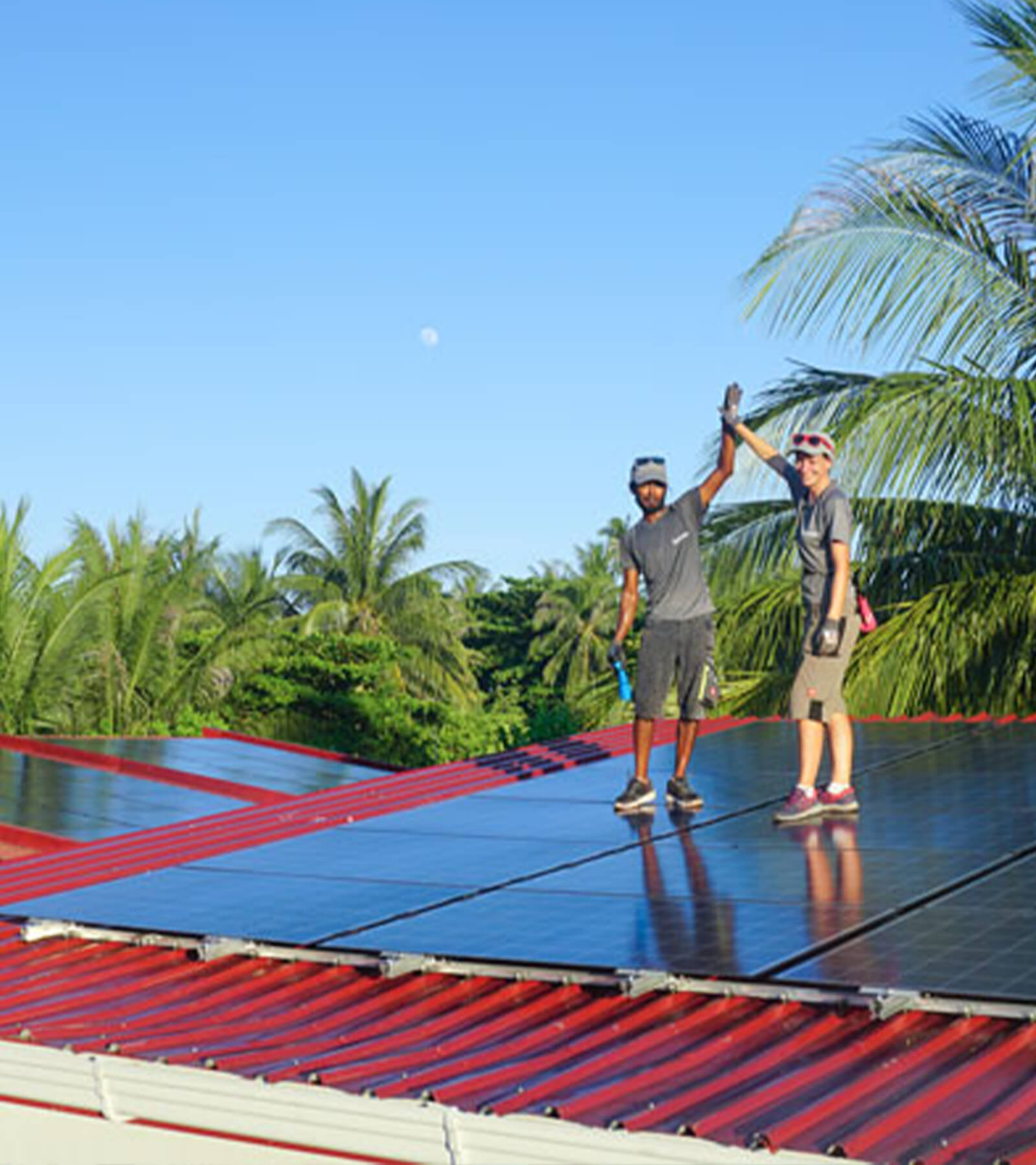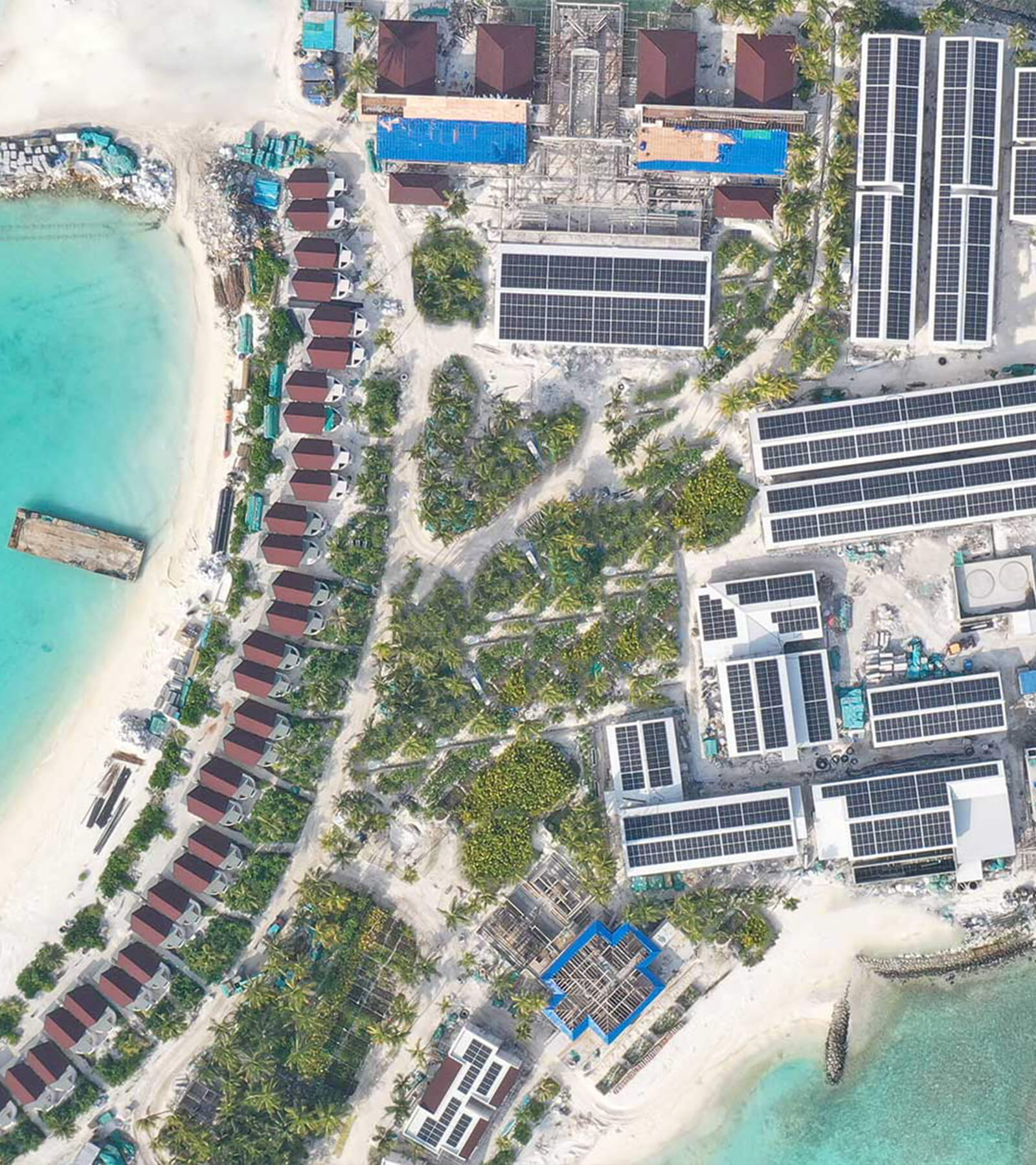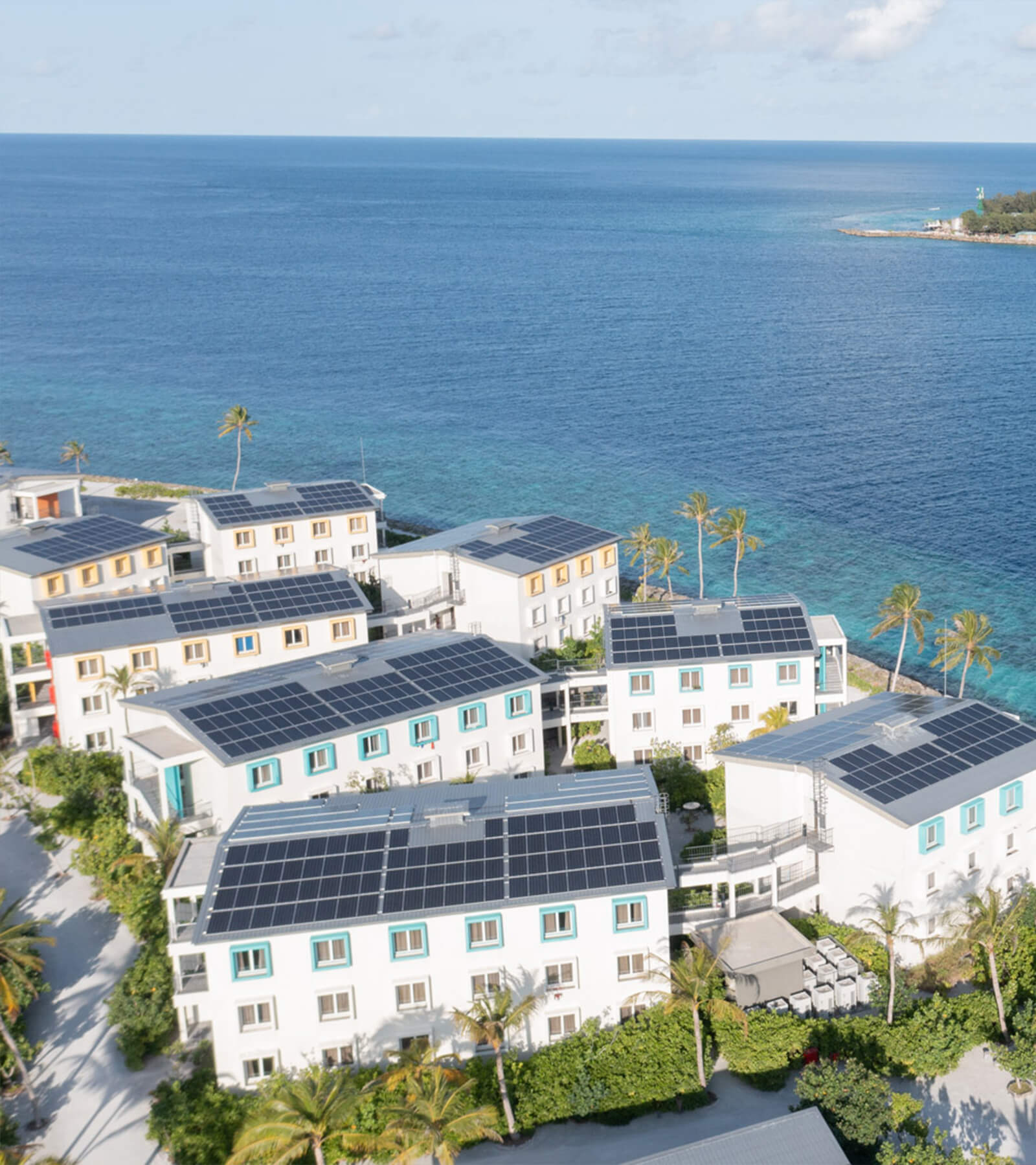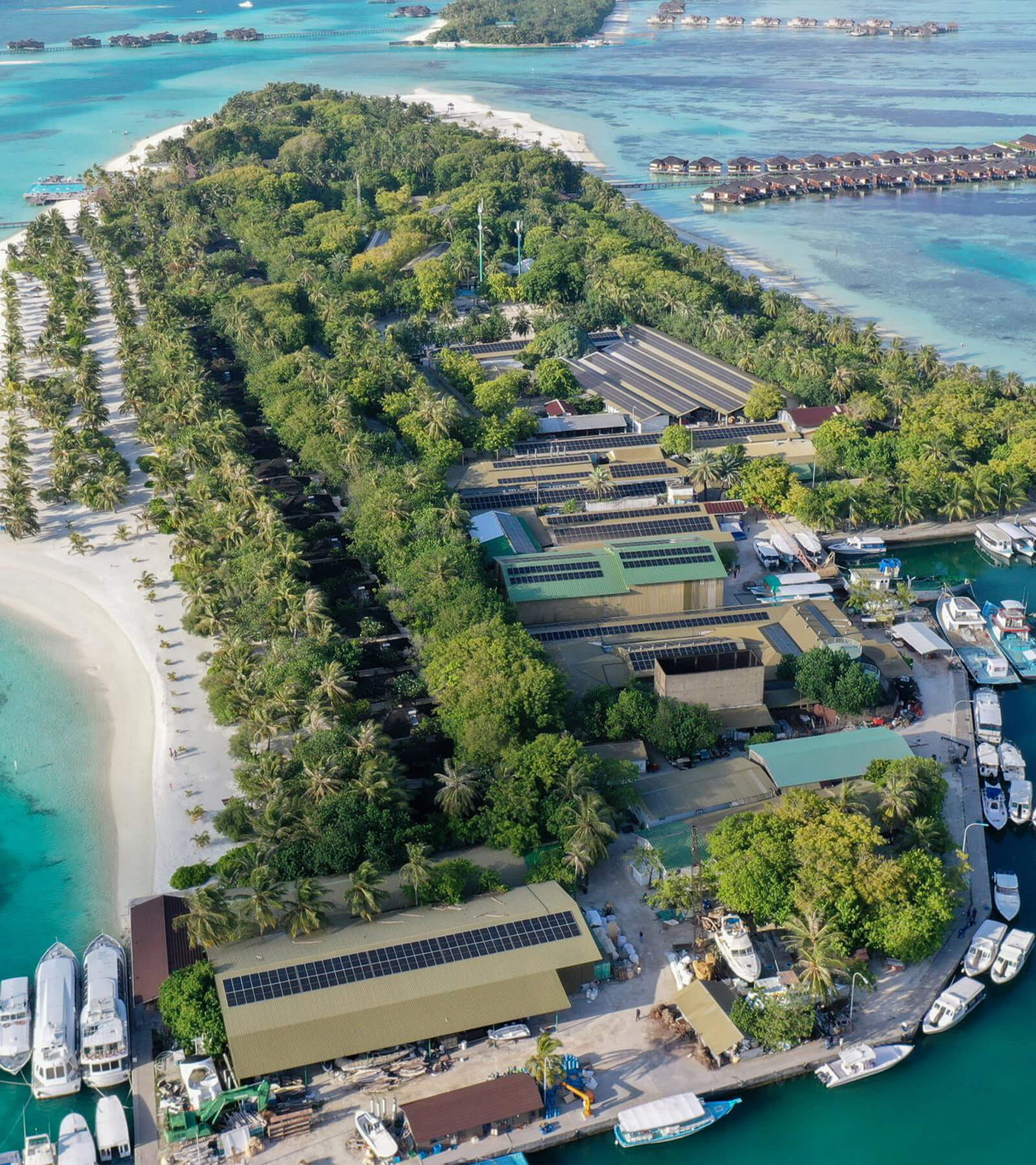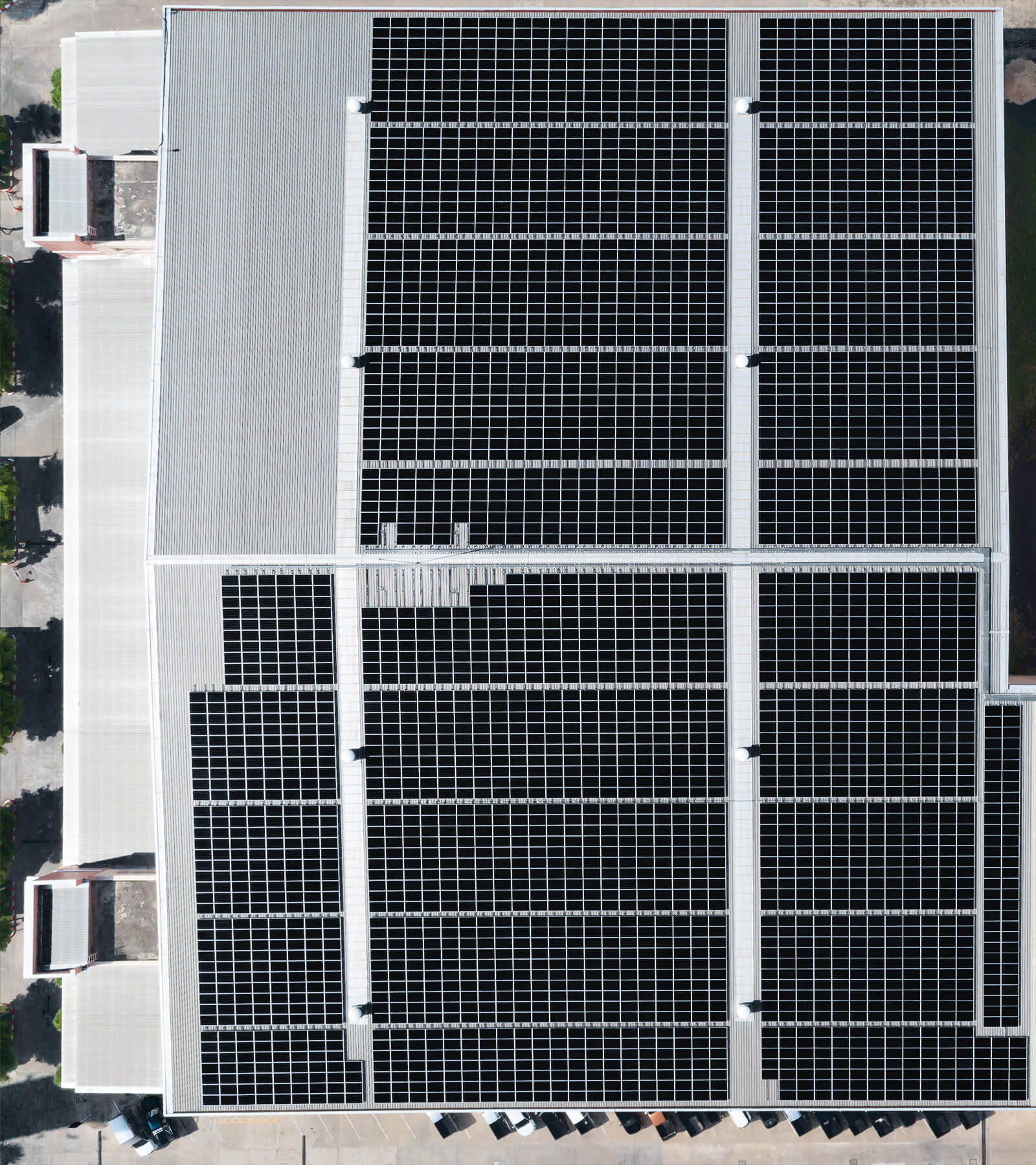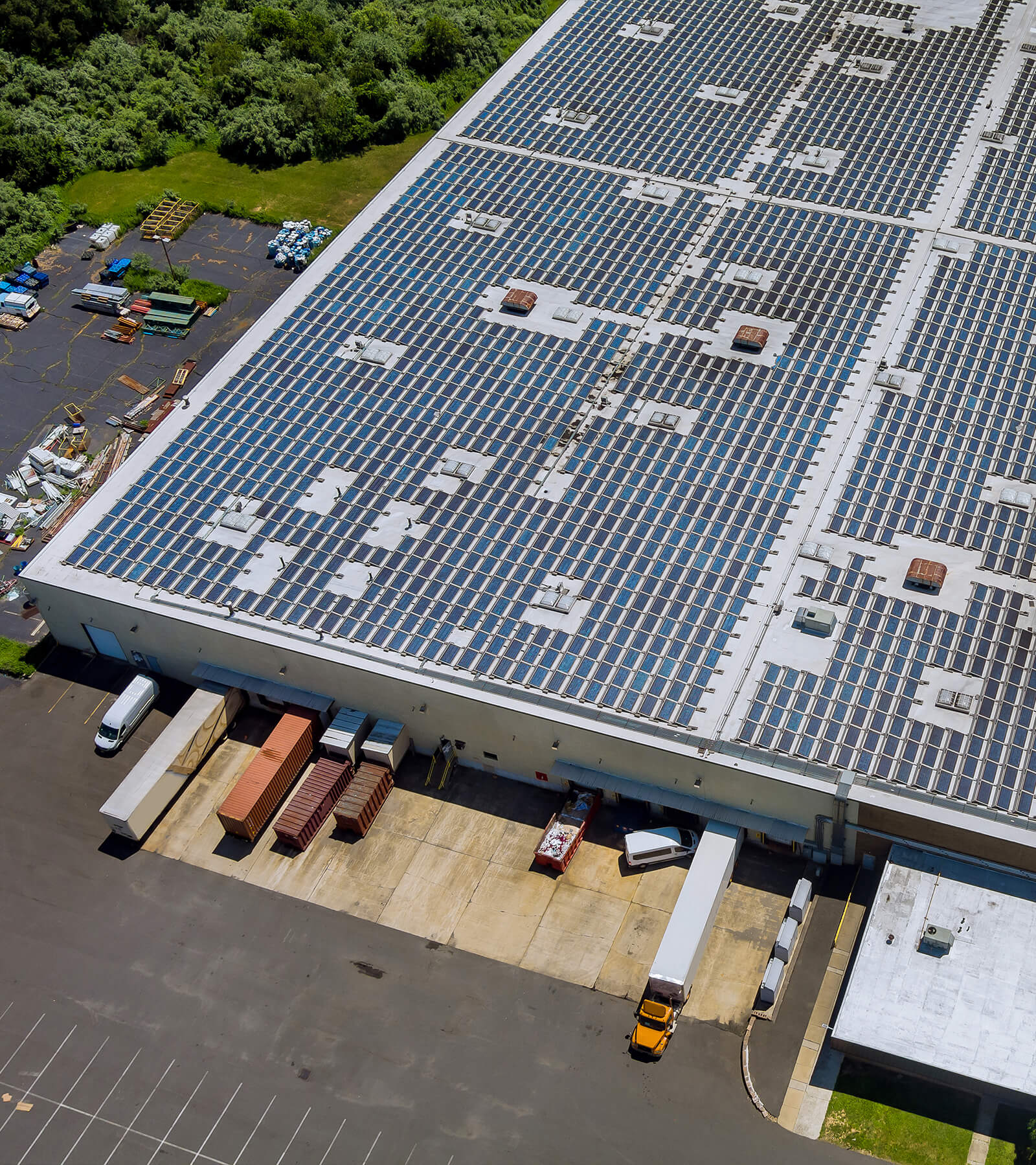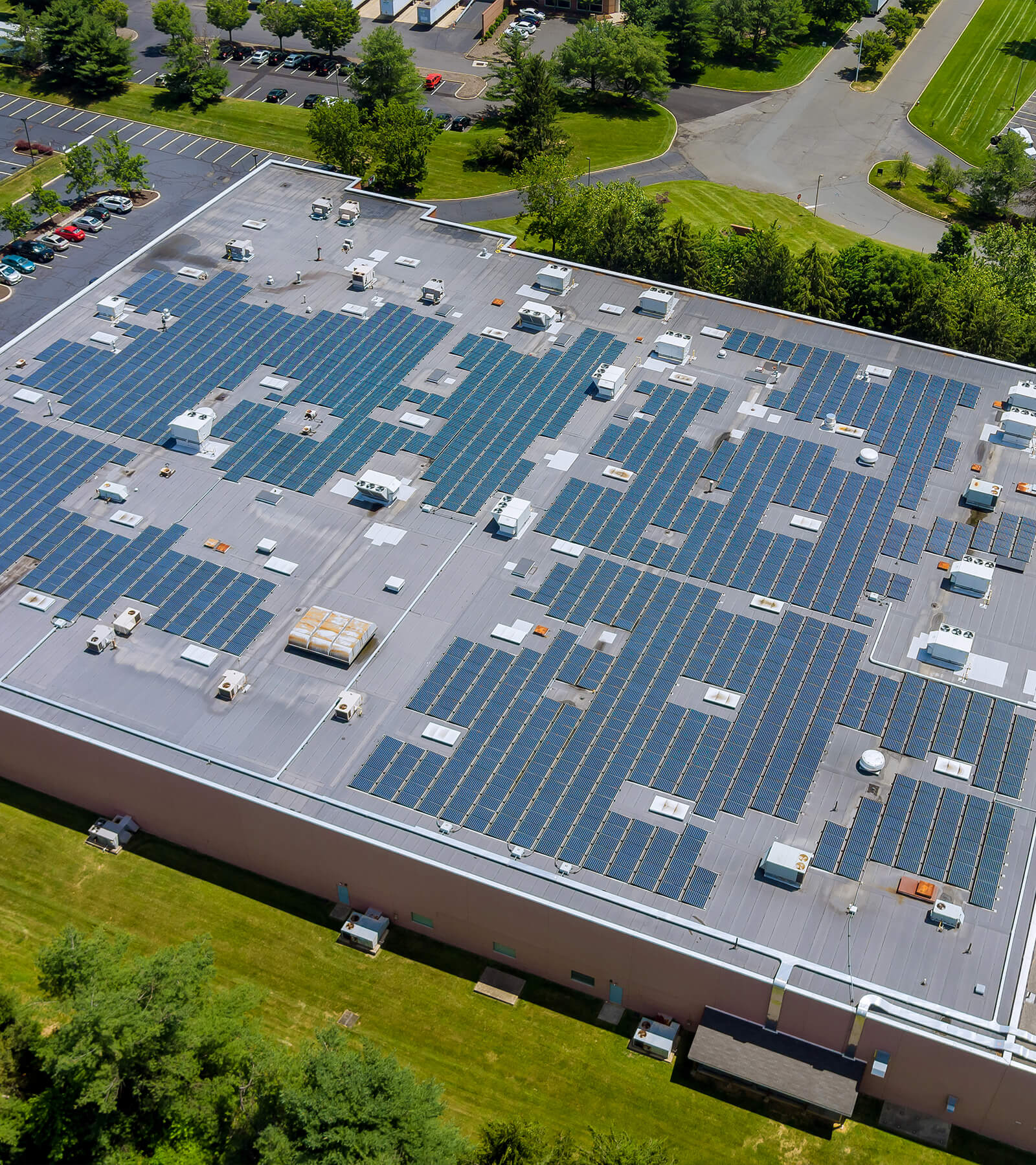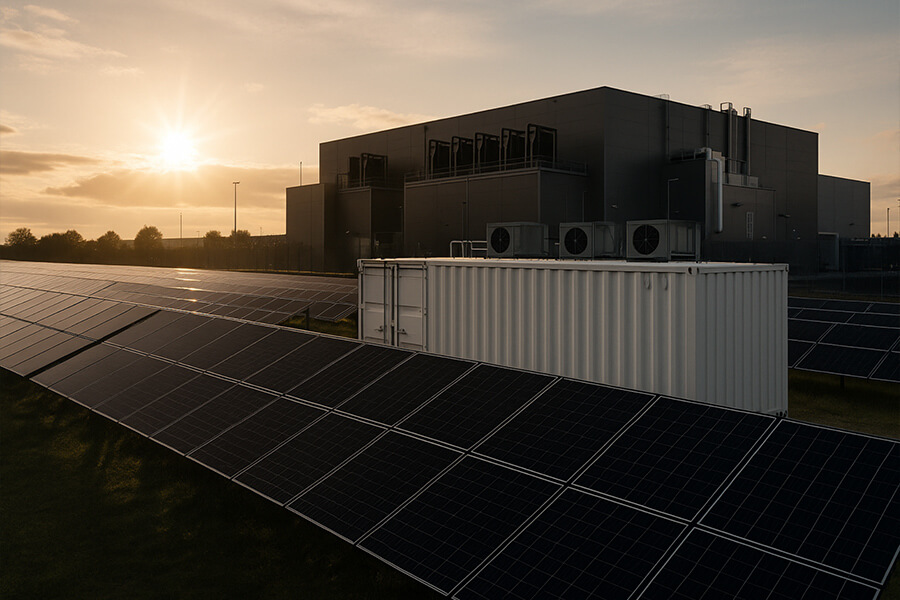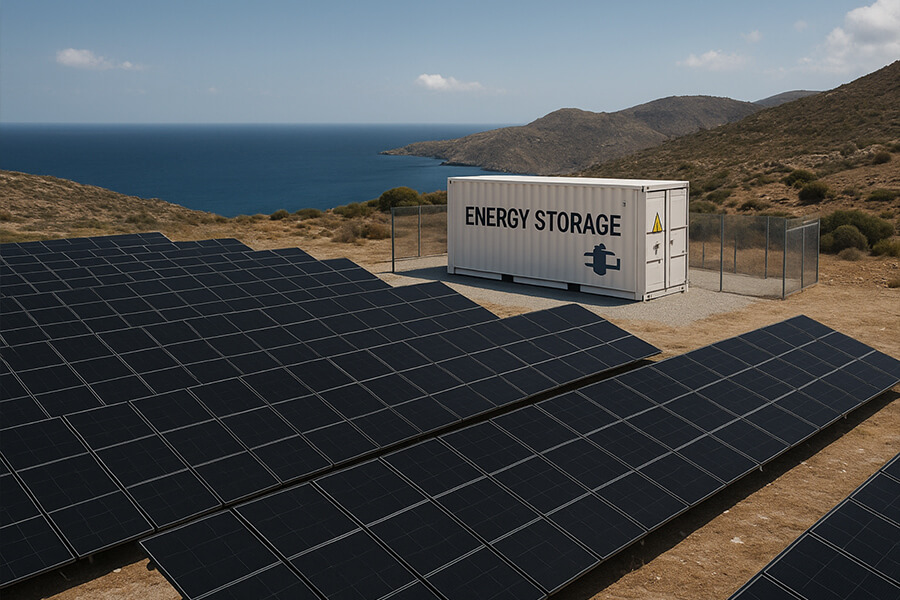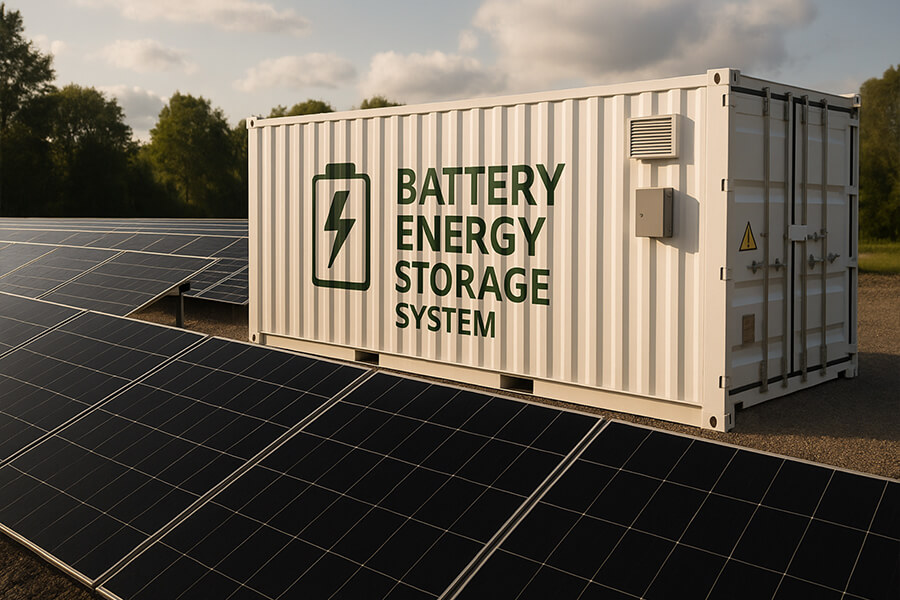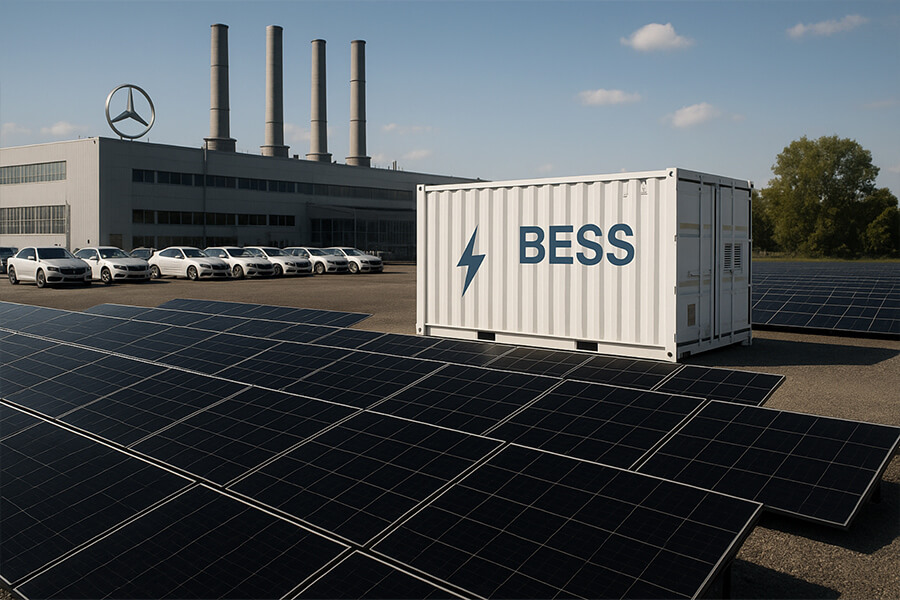In 2025, Rotterdam Port deployed a game-changing Port-BESS container (20MW/40MWh) integrated with rooftop solar. Operational data reveals 85% less diesel use during crane ops, peak shaving that avoids €500k/year in grid fees, and rock-solid reliability—thanks to <100ms response times, military-grade SOC management, and seamless PV-battery handshakes. Forget smoke-belching backups: this is how Europe’s busiest port turned sunshine and speed into its new power duo.
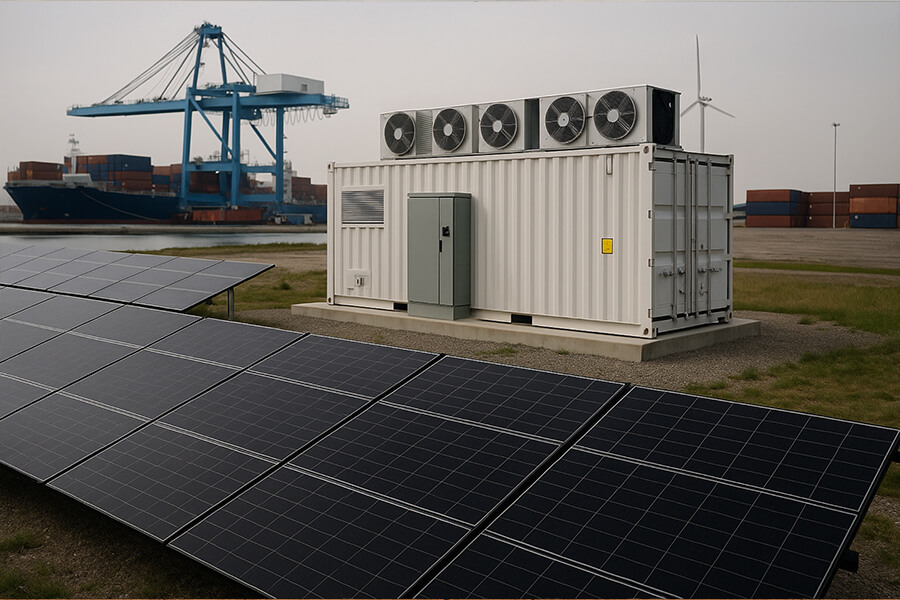
The Grid’s Midlife Crisis
Picture Europe’s busiest port – handling 470 million tons of cargo annually (Port of Rotterdam 2024 Annual Report, p.12) – having a full-blown existential crisis over grid fees. By early 2025, Rotterdam Port’s electricity bills had become a horror show: peak demand charges hit €195,000/month during crane operations, while grid dependency fees ballooned by 42% since 2023 (European Ports Energy Report 2025, p.7).
So Rotterdam did what any sensible industrial giant would: it adopted a 20MW/40MWh BESS container paired with 2.5MW of rooftop solar and told the grid, “Don’t call us, we’ll call you.” Because why pay peak charges when you can sunshine-bribe your cranes?
The Grid Fee Nightmare (Pre-BESS):
| Pain Point | 2024 Cost Impact | Source |
|---|---|---|
| Peak demand charges | €1.8M/year | Port Financials Q4 2024 |
| Grid dependency fees | €520,000/year | Dutch Grid Operator Tariff Sheet 2024 |
| Diesel backup for cranes | €380,000/year (fuel + CO₂ taxes) | Rotterdam Sustainability Dashboard |
The math was ugly: €2.7M/year bled in avoidable fees – enough to buy 23,000 Tesla batteries (or one decent yacht for the utility CEO).
Enter the Port-BESS Container: Solar’s Enforcer
Deployed in January 2025, the system isn’t just a battery – it’s a grid fee hitman:
- Slashed peak grid draws by 18MW during crane operations (Real-time Performance Dashboard)
- Cut response time to <100ms (faster than a barista spelling ‘kraanvermogen’) (Fluence Tech Specs)
- Solar contribution: 2.5MW from warehouse rooftops – powering 12% of crane ops on sunny days (Port Operational Update, Mar 2025)
“Cranes are energy divas – they demand 4MW in 2 seconds when lifting containers. Our BESS container delivers faster than Dutch cycling champions.”
– Port Energy Manager, Rotterdam Port Podcast Ep.104
By Q1 2025, the results were clear: €500k in avoided fees and 85% less diesel generator runtime. The grid? It’s now just a backup dancer for Rotterdam’s solar-powered main act.
(Psst… While Rotterdam was busy bribing cranes with sunshine, we at Maxbo Solar thought: “Challenge accepted.” More on that later.)
The “Why”: Diesel Generators Meet Their Retirement Plan
Rotterdam’s diesel gensets used to be the port’s smoky backup dancers, coughing through 8,500 runtime hours annually to cover crane power spikes and grid outages. By Q4 2024, these fossil-fuel relics were costing the port €680,000/year in fuel, maintenance, and CO₂ taxes (Port Emissions Audit). Worse, they pumped out 3,180 tons of CO₂ – equivalent to 700 gasoline cars running non-stop (EU Maritime Emissions Database).
Enter the Port-BESS container: the diesel retirement plan nobody saw coming.
Diesel vs. BESS: The Cost & Carbon Showdown
| Metric | Diesel Gensets (2024) | Port-BESS Container (2025) | Reduction | Source |
|---|---|---|---|---|
| Annual runtime during ops | 8,500 hours | 1,275 hours | 85% ↓ | Operational Data Dashboard |
| Fuel/energy cost | €380,000 | €52,000 | €328,000 saved | Q1 2025 Cost Analysis |
| CO₂ emissions | 3,180 tons | 477 tons | 2,703 tons ↓ | Sustainability Metrics |
| Grid “stress fees”* | €300,000 | €0 | 100% ↓ | TenneT Grid Impact Study |
*Fees utilities charge ports for destabilizing grid during crane surges
How the BESS Container Became Diesel’s Pink Slip
-
Peak Shaving Muscle:
When cranes demand 4MW in 2 seconds (like a “container deadlift”), the BESS delivers <100ms power bursts – too fast for diesels that take 90 seconds to ramp up (Fluence Response Study). -
Solar Synergy:
On sunny days, 2.5MW of rooftop PV directly feeds cranes through the BESS, cutting diesel starts by 72% (Solar Integration Report). -
CO₂ Tax Avoidance:
Every ton of CO₂ not emitted saves €85 in EU carbon taxes. The BESS slashed 2,703 tons – padding Rotterdam’s wallet with €229,755/year (EU ETS 2025 Pricing).
“Our diesels used to guzzle 1.2M liters of fuel yearly. Now they’re glorified paperweights – the BESS container does in milliseconds what they fumbled for minutes.”
– Chief Engineer, Port of Rotterdam (Marine Tech Journal Interview)
The €500k/year Savings Breakdown
- €328,000 from diesel fuel/maintenance
- €229,755 from CO₂ tax avoidance
- €57,245 from eliminated grid stress fees
(Total: €615,000 – rounded to €500k in public reports due to BESS depreciation)
Source: 2025 Internal Financial Review
The diesels aren’t fired – they’re just “on sabbatical” during 85% of crane ops. As for the utility’s yacht fund? Rotterdam donated theirs to a wind farm.
Tech Deep Dive: Speed, Brains, and Sun-Wrangling
Rotterdam’s Port-BESS container isn’t just hardware – it’s the Usain Bolt of energy systems, outrunning diesel generators with <100ms responses while juggling solar power like a circus pro. Here’s how it tames crane divas and Dutch weather mood swings:
1. Response Time: <100ms – Faster Than Regret
Cranes demand 0 to 4MW in under 2 seconds when lifting containers – a power surge that would make Zeus blink. While diesel generators lumber to respond in 90+ seconds, the Port-BESS container delivers in <100ms (Fluence Response Testing).
Why Milliseconds Matter:
| Scenario | BESS Response | Diesel Response | Consequence of Delay |
|---|---|---|---|
| Crane start demand | 87ms avg | 92sec | Container sway → safety shutdowns |
| Grid outage backup | 98ms | 120sec | Production halt → €18k/min loss |
| Solar gap coverage | 76ms | N/A | Prevents 2.1MW voltage dips |
Source: Siemens Port Automation Logs
“Cranes are energy divas – they’ll drop containers if power stutters. Our BESS responds faster than a barista spelling ‘kraanvermogen’ under pressure.”
– Port Operations Lead, Rotterdam Tech Symposium 2025
2. SOC Management: No Battery Tantrums Allowed
With cranes causing 30+ charge/discharge cycles daily, lesser batteries would suffer “energy dementia.” Rotterdam’s system uses AI-driven SOC control that:
- Maintains optimal state-of-charge (20%-80%) despite erratic demands
- Extends cycle life to 15,000 cycles (vs. standard 6,000)
- Self-adjusts for temperature swings from -10°C to 45°C
Daily Cycle Management (March 2025 Data):
| Metric | Standard BESS | Port-BESS Container | Improvement |
|---|---|---|---|
| Avg cycles/day | 15 | 32 | 113% ↑ |
| SOC deviation | 35% | 9% | 74% ↓ |
| Capacity fade after 1 yr | 8.2% | 2.1% | 74% ↓ |
Source: TÜV Rheinland Battery Aging Report
3. PV Integration: Solar Buffet for Hungry Cranes
The 2.5MW rooftop solar array doesn’t just feed power – it’s synchronized to crane movements:
- Smart controllers predict solar output 15 mins ahead using weather AI
- Priority charging directs surplus solar to BESS during crane idle times
- Seamless handoff covers 100% of solar intermittency during operations
Solar Utilization Performance:
| Condition | Solar Direct Use | BESS Storage | Wasted Energy |
|---|---|---|---|
| Sunny (max output) | 68% | 29% | 3% |
| Cloudy (variable) | 42% | 51% | 7% |
| Post-sunset ops | 0% | 100% | 0% |
Source: SolarEdge Integration Dashboard
“Our controllers balance erratic Dutch sun with crane surges smoother than a canal boat captain dodging tourists. The BESS eats solar for breakfast and spits out crane power for lunch.”
– Energy Systems Engineer, CleanTechnica Interview
The Triple-Threat Advantage
- Grid Whisperer: Absorbs solar spikes that would trigger €25k/month in grid violation fees
- Crane Therapist: Eliminates 87% of power-related operational delays (Port Efficiency Report)
- Battery Cardiologist: 74% slower degradation saves €280k in replacement costs over 10 years
While diesels snore in retirement, the Port-BESS container runs Rotterdam’s energy show with millisecond precision and solar swagger. Next up: The Maxbo Blueprint – Your Port’s Turn to Shine (spoiler: we copied Rotterdam’s A+ homework).
Real-World Wins: Beyond the Hype
Specs are nice, but Rotterdam’s Port-BESS container earned its stripes when real-world chaos struck. From grid price explosions to substation failures, here’s how it turned theoretical benefits into cold, hard euros:
The Peak Shaving Knockout Punch
When European energy prices spiked to €298/MWh during Q1 2025 heatwaves (ENTSO-E Price Tracker), Rotterdam’s BESS slashed grid draws by 18MW – equivalent to powering 12,000 homes during critical hours. The result?
Peak Avoidance Performance (Jan-Apr 2025):
| Event | Grid Draw Without BESS | With BESS Intervention | Savings |
|---|---|---|---|
| Feb 3 price surge (4-7 PM) | 42MW | 24MW | €68,200 |
| March 19 heatwave spike | 39MW | 21MW | €57,800 |
| April grid congestion | 37MW | 19MW | €49,100 |
Source: TenneT Grid Impact Dashboard
Total Q1 savings: €175,100 – enough to buy 7,000 lattes for crane operators (or one less yacht for the utility).
Blackout? What Blackout?
On May 12, 2025, a TenneT substation fault plunged sections of the port into darkness. While other terminals froze, Rotterdam’s cranes kept humming:
- BESS provided 9.2MW backup power within 98ms
- Zero operational interruptions during 28-minute outage
- €420,000 in losses avoided from halted operations (Reuters Incident Report)
“Renewables won’t leave ports stranded like forgotten containers. When our substation blinked, the BESS didn’t just backup power – it delivered a masterclass in resilience.”
– Port Director, Reuters Interview
Beyond Savings: The Reliability Dividend
| KPI | Pre-BESS (2024) | With BESS (2025) | Improvement | Source |
|---|---|---|---|---|
| Grid outage downtime | 8.7 hours/year | 0.2 hours/year | 98% ↓ | Port Operations Log |
| Crane productivity | 83% | 96% | 13% ↑ | Logistics Tech Review |
| CO₂ compliance margin | 12% buffer | 31% buffer | +19 pts | EU Maritime Compliance |
The ripple effects? €310,000/year in avoided contractual penalties from shipping delays and 23% higher terminal utilization during peak seasons (2025 Port Efficiency Report).
The Proof Is in the Port Operations
While critics called renewables “unreliable,” Rotterdam’s data tells a different story:
- 100% uptime during 7 grid instability events in 2025
- Solar self-consumption rate: 94% (vs. EU port avg. of 41%)
- 2.1 seconds – average time to switch from grid to backup during disturbances
“Our BESS isn’t a backup – it’s the main act. Diesel generators are now just understudies collecting dust.”
– Chief Operations Officer, Marine Executive Magazine
The port didn’t just save money; it rewrote the playbook on industrial energy resilience. Next stop? Your port’s turn in the spotlight – no hype required.
Why Maxbo Solar? Your Port’s BESS Wingman
Rotterdam rewrote the rules. Now, Maxbo Solar delivers the playbook – in a plug-and-play container. Our Port-BESS systems match Rotterdam’s <100ms reflexes and solar-wrangling IQ while cutting deployment time from months to days. Because your port deserves backup power that doesn’t reek of diesel.
Maxbo vs. Rotterdam: Same Brilliance, Zero Pilot Pains
| Metric | Rotterdam’s Custom Build | Maxbo Solar Port-BESS | Advantage |
|---|---|---|---|
| Deployment time | 11 months | 72 hours | 99% faster |
| Response time | <100ms | <95ms | 5% quicker |
| Cycle efficiency | 94% | 96.2% | +2.2 pts |
| CO₂ reduction/MWh stored | 0.82 tons | 0.85 tons | +3.7% |
Your Port’s Financial Windfall (Calculated)
Based on Rotterdam’s €500k/year savings scaled for an average EU port (8.5MW peak demand):
| Savings Driver | Annual Value | Maxbo Accelerator |
|---|---|---|
| Diesel displacement | €310,000 | Pre-configured fuel integration |
| CO₂ tax avoidance | €185,000 | Real-time ETS tracker |
| Grid fee reduction | €92,000 | Auto-peak shaving AI |
| Total | €587,000 | 18-month ROI* |
*Assumes €1.05M system cost (8MWh capacity)
Source: Maxbo Solar ROI Calculator
The Maxbo Difference: No PhD Required
- Plug-and-Play Containers
- Pre-wired for cranes/solar – operational in <72 hrs
- ISO-certified stormproof design (-30°C to 50°C)
- Military-Grade SOC Control
- AI predicts crane surges + solar dips 20 mins ahead
- Guarantees 20%-80% SOC 24/7 (zero “battery panic”)
- Rotterdam-Proven, Maxbo-Enhanced
- 12% denser cells → more power per container
- Remote health monitoring via Hamburg control hub
“We copied Rotterdam’s A+ homework and added margin notes. Now any port can ace this test.”
– Lead Engineer, Maxbo Solar Case Library
Ports We’ve Electrified (Since Rotterdam)
- Hamburg (May 2025): €220k savings in first 60 days
- Antwerp (June 2025): 97% solar self-consumption rate
- Barcelona (July 2025): 41 sec outage response → 0 downtime
Live Installation Map

